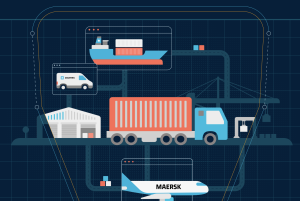 Food safety is a priority throughout the whole supply chain. From manufacturer, its suppliers and logistics service providers, to a retailer and ultimately the end-user, critical care needs to be applied to ensure that food safety and hygiene are not compromised.
Food safety is a priority throughout the whole supply chain. From manufacturer, its suppliers and logistics service providers, to a retailer and ultimately the end-user, critical care needs to be applied to ensure that food safety and hygiene are not compromised.
But, how best to manage food safety across the global supply chain while adhering to regulatory requirements remains a difficulty for the food industry.
“It has become more than a necessity, but an obligation for logistics service providers to provide clients with necessary controls to ensure best practices and operations when it comes to food safety and hygiene” say Friedel Spies, Business Development Director in South Africa, ID Logistics in this month’s SmartProcurement.
“This is even more pertinent within the perishable and chilled industry, as complying with temperature controls and inventory management for product life is non-negotiable.”
“Product manufacturers want to focus on their core business and leave the rest to experts in their respective fields. It is the logistics service provider’s responsibility to ensure quality product reaches the consumer at all times.
Therefore, before approaching service providers it is incumbent on manufacturers to ensure that product process standards are adhered to, proper packaging is in place and that the entire supply chain processes are taken into account.
Where food is concerned, some factors cannot be neglected: clean facilities, internal and external site housekeeping, temperature controls, pest control and good food product traceability in case of product recalls, which brings with it reverse logistics and all the challenges that go with this process.
According to Spies, within the supply chain and logistics industry, “there’s always product returned or ordering inefficiencies, so it is important to ensure that logs are managed and that quality service is provided to the customer. Logistics companies must follow a stringent process to manage reverse logistics and understand the complexity of this process compared with forward logistics”.
This calls for close collaboration with all parties involved in the supply chain process to make sure that product safety standards are met, proper training provided, and food standards adhered to,” says Spies.


























